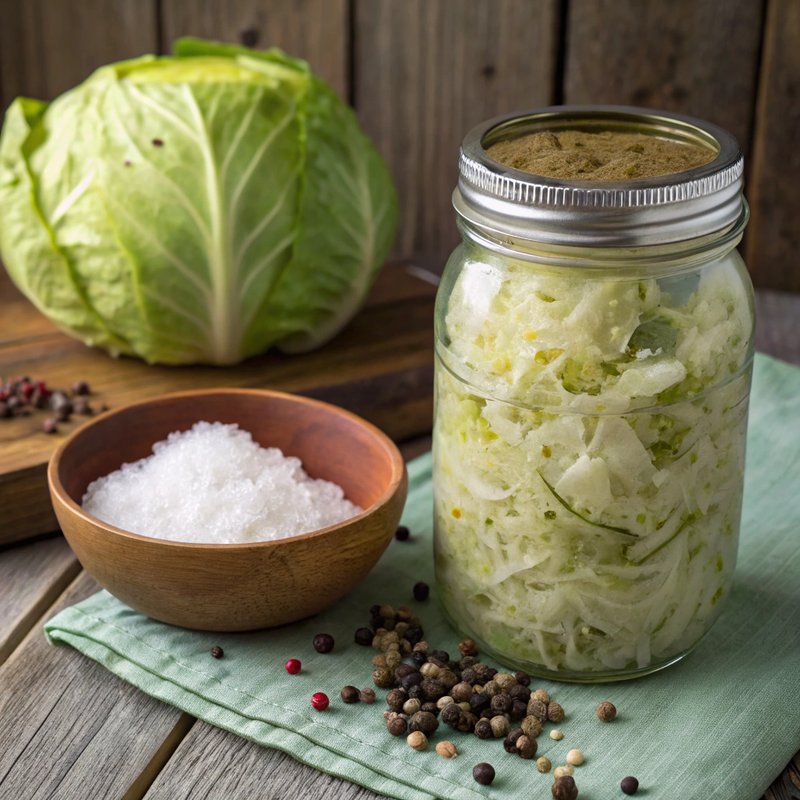
Want more deliciousness? Follow me on X @TeresasRecipes for the latest culinary creations and kitchen adventures!
Homemade Fermented Cabbage Sauerkraut
This homemade sauerkraut is a tangy, probiotic-rich delight made from fresh cabbage. A staple in German cuisine, sauerkraut is not only delicious but also packed with health benefits. The fermentation process enhances the natural flavors of the cabbage while introducing beneficial bacteria that aid digestion. Enjoy it as a zesty side dish, on top of sausages, or mixed into salads for an extra crunch!
Servings: 16 (1 tablespoon per serving)
Ingredients
- Green cabbage
- 1 medium head (about 2-3 pounds), shredded
- Salt
- 3 tablespoons (non-iodized, such as sea salt or kosher salt)
- Caraway seeds
- 1 tablespoon (optional, for flavor enhancement)
- Filtered water
- as needed (if cabbage does not release enough juice)
Instructions
- In a large mixing bowl, combine the shredded cabbage and salt. Toss the cabbage with your hands to evenly distribute the salt.
- Massage the cabbage thoroughly for about 5-10 minutes. This action helps to break down the cell walls, releasing the natural juices that will form the brine.
- Once the cabbage is limp and juicy, add the caraway seeds if using, and mix well to incorporate.
- Transfer the cabbage mixture into a clean, sterilized glass jar or fermentation crock. Pack it down firmly to remove any air pockets, ensuring the cabbage is submerged in its juices. You can leave about an inch of space at the top to allow for expansion during fermentation.
- Cover the jar with a clean cloth secured with a rubber band, or use a fermentation lid to allow gases to escape while keeping contaminants out.
- Let the sauerkraut ferment at room temperature (ideally between 65°F to 75°F or 18°C to 24°C) for 1-2 weeks. Check on it every few days, pressing down on the cabbage to ensure it's submerged in the brine. Adjust the fermentation time based on your taste preference; the longer it ferments, the tangier it becomes.
- After the desired fermentation period, taste the sauerkraut. If it has reached the tanginess you prefer, transfer it to the refrigerator to slow down the fermentation process. Use a clean spoon to avoid introducing bacteria.
- Serve the sauerkraut chilled or at room temperature. It pairs wonderfully with meats, sandwiches, and salads.
Dietary Information
Servings: 16 (1 tablespoon per serving) • Dish Type: Fermented Side Dish • Prep Time: 15 minutes • Fermentation Time: 1-2 weeks • Calories: 5 • Fat: 0g • Carbs: 1g • Protein: 0g • Sodium: 120mg • Sugar: 0g
Reviews
Share Your Experience
Your Review
Want to share your experience with this recipe?
Sign in to Leave a ReviewCommunity Reviews
Loading community reviews...
Selecting wines...